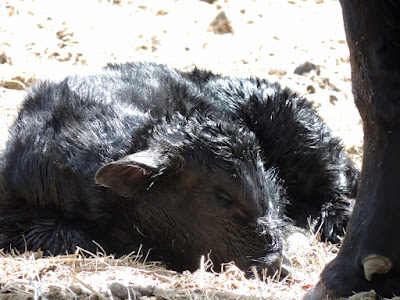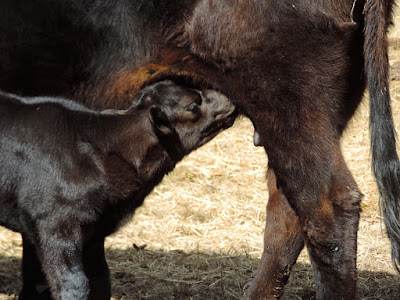Like many folks enjoying life off the ranch, March at Drowsy Water involves a lot of watching, waiting and holding your breath. No, we’re not huge basketball fans, but our game now is about the cows and their calves. We wait, we watch, we check, we repeat.
Just down the road from the ranch, we keep our herd of about 30 cows. All the cows should be bred —seeing as we put our bull with them about 272 days ago–but we didn’t have the vet check to make sure this year. We can make an educated guess based on the size of their bellies that most of them are, indeed, pregnant. Everyday, we check multiple times to see if we have any new calves.
Usually the process of a cow birthing her calf is something that nature takes care of just fine. The cow will go off on her own, lay down in what is usually a dry and protected place, and, a few hours later, she has a calf. We then check that the calf and cow are healthy: a new calf should be dry and able to stand and nurse the mother shortly after birth and the mother should be able to stand and allow her calf to nurse.
The weather is a big concern during calving season. We prefer to have the cows give birth on dry, sun-warmed ground but mother nature doesn’t always cooperate. The calves are born wet and they rely on their mother to lick them clean and dry. If born in a snowstorm or on wet ground, the calf can’t get dry and can’t get warm. We take extra care in snow and wet to make sure the calf is dry. We towel dry them, warm them in the truck, or keep them inside if needed.
After a cow has her calf, she is instictively protective. Some of our cows are friendly enough to let us get close enough to put an ear tag on their calf without much protest while others have to be tricked with grain or separated before we can tag and check the calf. Either way, all the cows watch us carefully as we walk through their nursery.
When it is all said and done, we hope to have 30 new calves that spend the summer with their mom on open range eating grass and growing.




